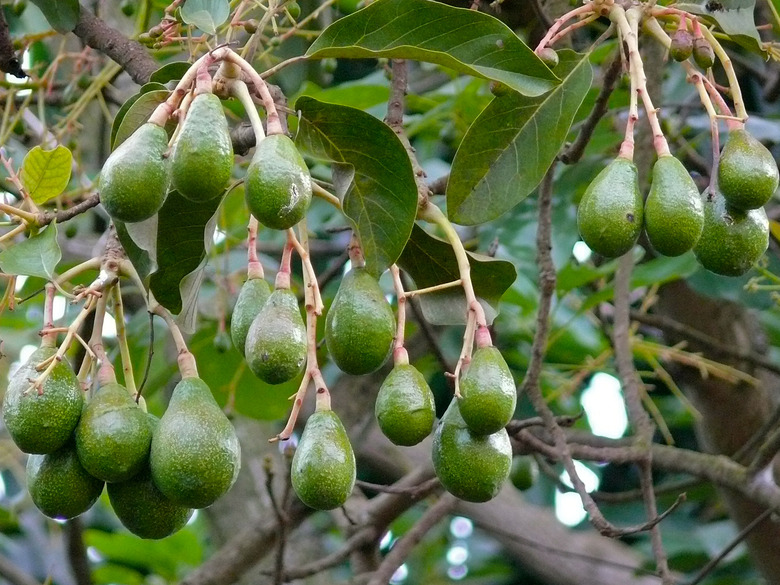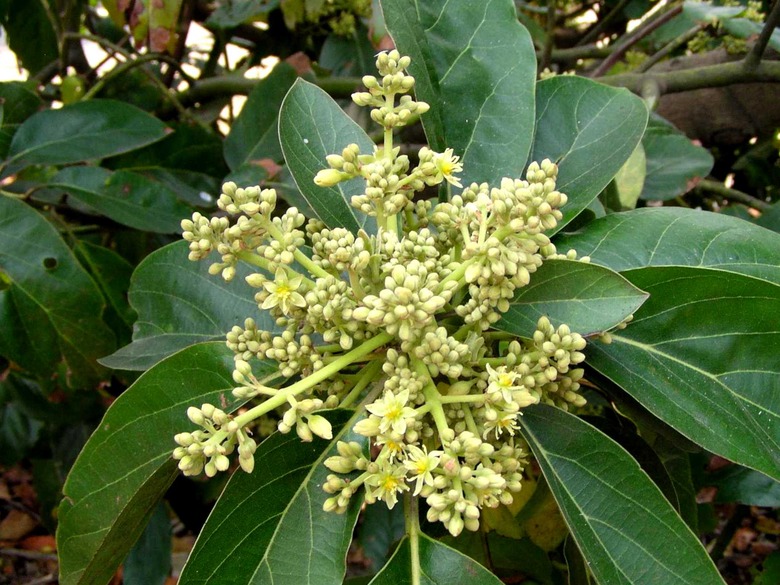How To Force Avocado Trees To Fruit
If your avocado tree is mature and not bearing fruit or if you recently incorporated it into your landscape and want to speed up its growth cycle to bear fruit more quickly, you have several factors to consider. **There is no method by which you can force an avocado tree to fruit,** but you can ensure faster fruiting if you plant a grafted tree and care for it well.
Avocado trees (Persea americana, USDA zones 10 to 12) are fascinating biological specimens, but **the foremost factor that affects fruiting is pollination, without which no fruit will set.** After pollination, consider the age of the tree, whether it was grafted or not, and the environmental conditions under which it is growing.
Grafted Trees Bear Fruit Faster
Hopefully, you haven't popped an avocado seed from the store into some potting soil and now have a young sapling that you are hoping to bear fruit. If this is the case, you can't speed the process, because an avocado seedling takes 10 to 15 years to produce fruit—and no amount of fertilizer or coddling can change that timeline.
Tip
You cannot artificially speed up fruiting, whether the tree is grown from seed or grafted.
And even if it does produce fruit, avocados are not true to seed, so the fruit is likely to be different from the tree from which you got the avocado pit.
However, grafted trees typically produce fruit within one to two years.
A Perfect Flower’s Pollination
Here's where it gets interesting. If your avocado is flowering like crazy but no fruit has set, you can assume a lack of pollination is the problem. Here's why:
The avocado flower is a "perfect" flower, meaning it has both male and female organs, but when the flower first opens, it opens only as a female—the stigma is receptive to pollen, but the male part, the stamen, is inactive and not shedding pollen. After two to four hours, the flower closes and reopens as a male the next day.
This change in sex phases of a flower is called synchronous dichogamy. Then, the plot thickens.
Type A and Type B
For an avocado flower to be pollinated, a different flower that is in the male stage must be open at the same time to pollinate a flower in its female stage. This occurs only if you have two avocado trees, one that is a Type A and one a Type B. Furthermore, it must occur within the two-day window when a flower is active; otherwise, that's it for the year.
- Type A: Type A flowers open as females in the morning. After a few hours, the flower closes for the day, and that's it for Day 1. The next day, Day 2, it opens in the afternoon as a male, shedding pollen and looking for a receptive stigma.
- Type B: Type B flowers reverse the time of day. These flowers open as females in the afternoon of Day 1 and then close. The next morning, they open as males.
The University of California reports that no other plant is known to incorporate synchronous dichogamy with rotating active female and male plant parts.
If the temperature falls below 70°F, the timing can become irregular, and the conditions are conducive to having flowers that are in both the female and male stages at the same time. Too-low temperatures, such as those below 60°F, impede the process entirely, and no fruit may be set at all.
Pollination in the Real World
All this would suggest you must have trees of both Type A and Type B, but while that would be ideal, you still might get some fruit set even if you have only one tree. That's because the temperature directly affects the flowers' rhythm.
If the temperature falls below 70°F, the timing can become irregular, and the conditions are conducive to having flowers that are in both the female and male stages at the same time, according to the University of California Cooperative Extension. Too-low temps, such as those below 60°F, impede the process entirely, and no fruit may be set at all.
Plus, pollinating insects are a major factor. Not only must enough flowers be in different male and female stages, but insects such as bees must be present for cross-pollination between flowers to occur.
If you know what type of avocado plant you have, here's a general list of common varieties of both Type A and Type B:
- Type A varieties: Hass, Gwen, Lamb Hass, Pinkerton, Reed, GEM and Harvest
- Type B varieties: Bacon, Ettinger, Fuerte, Sharwil, Sir Prize, Walter Hole, Zutano, Marvel and Nobel
Ideal Environmental Factors for Avocados
To give your avocado the best opportunity to bear fruit as early as possible, ensure the right environmental conditions.
Wind
Avocados are a bit fussy despite their majestic size and impressive structure. For example, they are sensitive to wind. If your tree has set fruit, wind can cause fruit drop, affecting the fruit yield.
Temperature and Sun
They also dislike very high temps. Sustained temperatures over 100°F also result in fruit drop.
While avocado trees are OK planted in full sun, their trunks can develop sunscald in a western exposure, affecting their overall health. A location in partial sun is ideal.
Fertilizer and Water
Fertilizer and irrigation are key to ensuring that an avocado tree produces multiple blooms. **For mature avocados five years old and older, provide one pound of nitrogen fertilizer per year, applied in late winter or early summer.**
An avocado tree also requires other nutrients to ensure good fruit bearing, including zinc, potassium and iron, applied in spring. Get a soil test to see if your soil is deficient in these nutrients.
Avocado trees must also have enough water and be planted in an area with well-draining soil. Water daily if it's hot and at least weekly in cool weather, but don't overwater if the soil is already damp.
References
- California Rare Fruit Growers: Avocado
- University of California Agriculture and Natural Resources: Avocado Flowering Basics
- Master Gardeners of San Diego: Avocado Production in Home Gardens
- Agrilife Extension Horticulture: Home Fruit Production – Avocado
- Penn State University, Plant Village: Speeding Up Avocado Fruiting?

